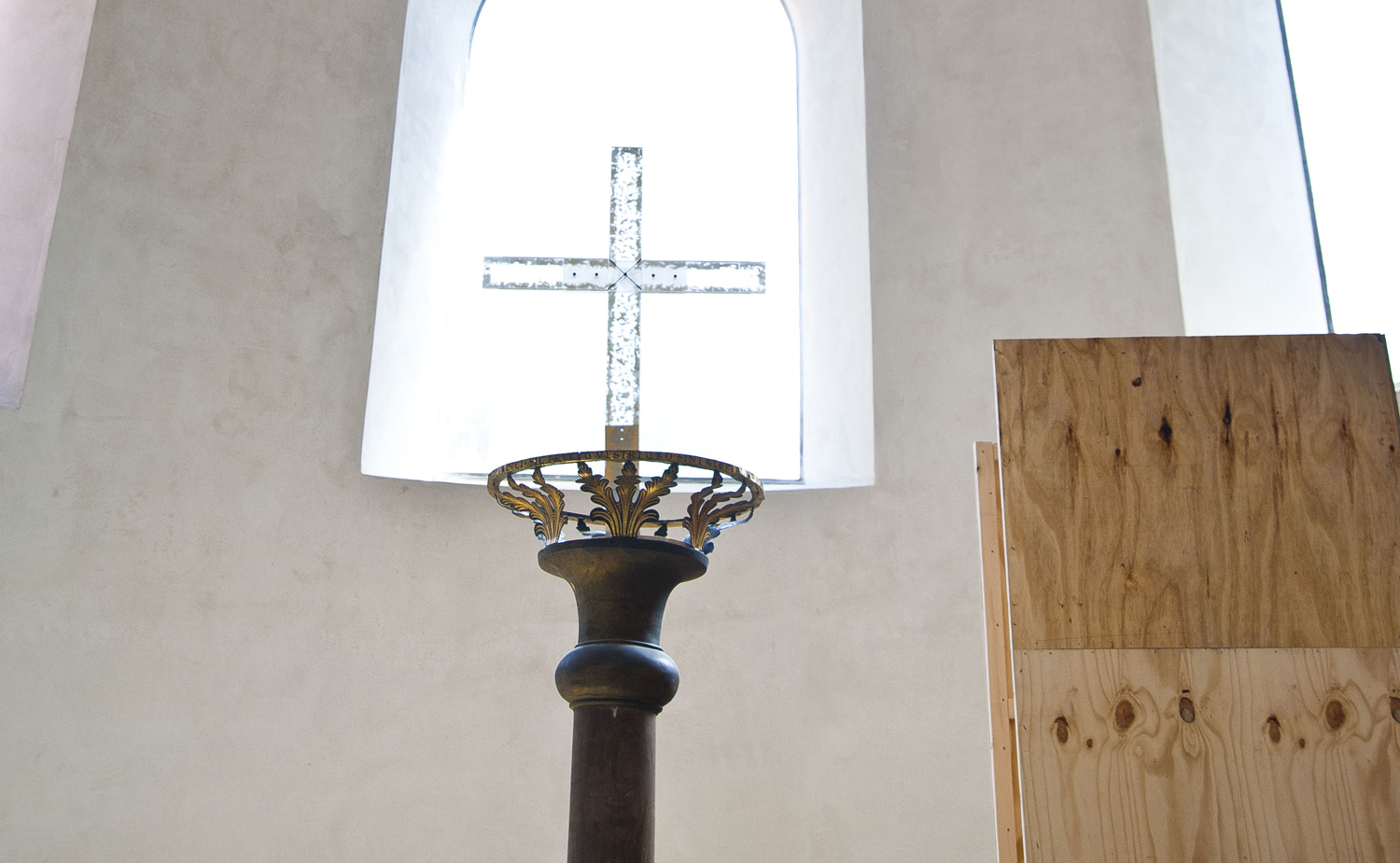The Irminsul
The Irminsul is an artwork in Hildesheim Cathedral which is shrouded in legend. Its age is still not known, although it appears to originate in the Middle Ages. Its original use has also yet to be established.
The imposing Irminsul was linked to a legend that was published in the 17th century. Rumour has  it that it was originally a pagan pillar which Charlemagne brought down in the 8th century.The Irminsul in Hildesheim Cathedral. It was said to have been found later and then erected in Hildesheim Cathedral. Bishop Hezilo is said to have added it to the Cathedral’s collection.
it that it was originally a pagan pillar which Charlemagne brought down in the 8th century.The Irminsul in Hildesheim Cathedral. It was said to have been found later and then erected in Hildesheim Cathedral. Bishop Hezilo is said to have added it to the Cathedral’s collection.
The shaft of the pillar was made from calc-sinter. These are calcium deposits from the Roman Eifel Aqueduct, that was used to provide ancient Cologne with fresh water for 190 years. On the upper and lower sides, the pillar is surrounded by bronze rings. The upper ring passes into a metal goblet in a manner reminiscent of a capital. The arrangement of the pillar has been changed several times. It originally included a crown of lights containing 14 lights. There is said to have been an iron spike in the middle where candles could be placed at certain festivals. It appears to have held the Easter candles. In 1651, Dean Friedrich von Oyenhausen replaced the central dome with a wooden image of Mary. However, this was replaced by a silver image of Mary donated by Jodokus Edmund von Brabeck in 1741.
As part of the Cathedral’s restoration, the Irminsul’s arrangement was changed again. The figure of Mary was replaced by a crystal cross which now crowns the pillar. Meanwhile, the figure of Mary is being stored in the Cathedral Museum’s collection.


